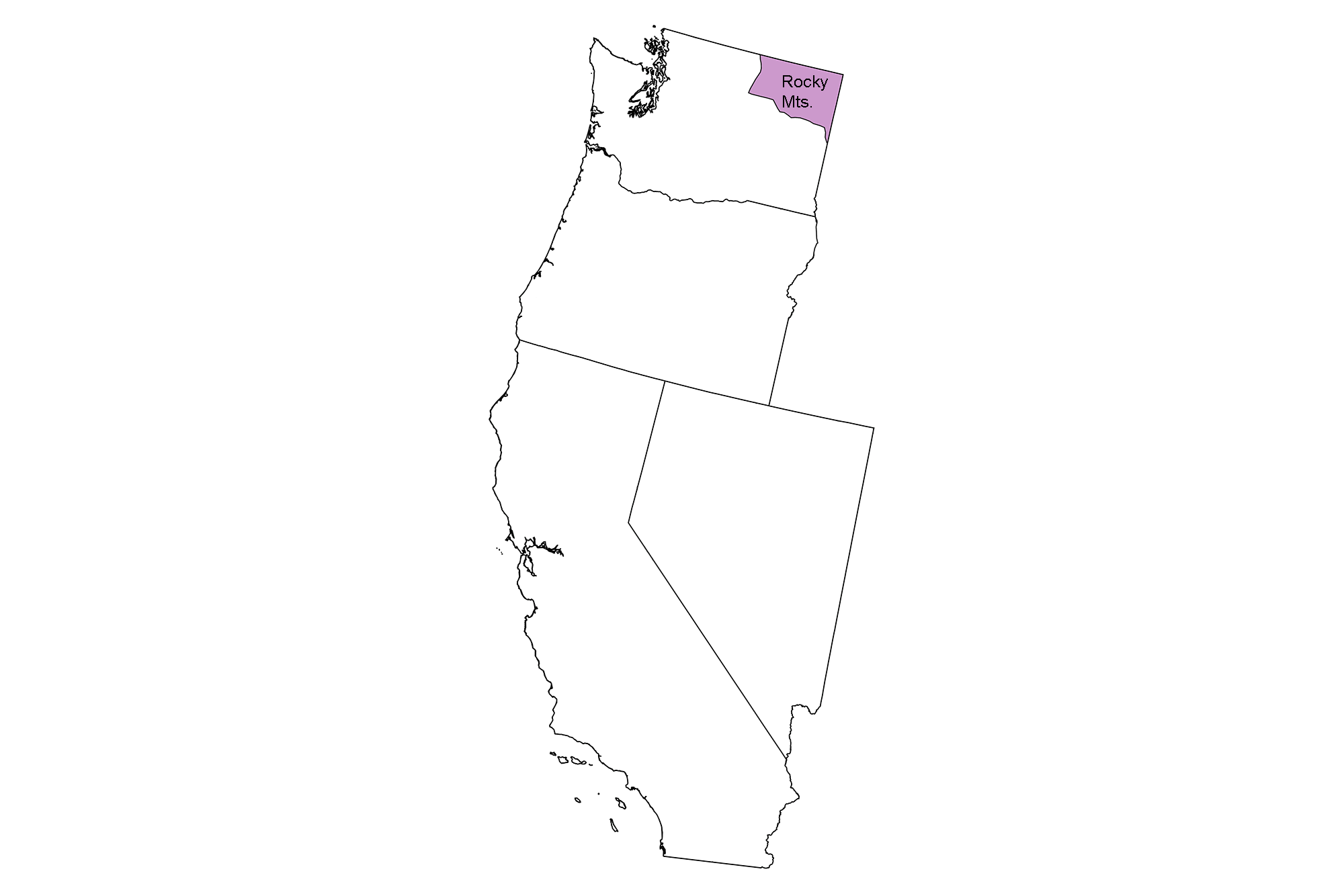
Page snapshot: Introduction to the fossils of the Rocky Mountain region of the western United States.
Topics covered on this page: Paleozoic fossils; Cenozoic fossils; Eocene Republic fossil site; Resources.
Credits: Some of the text on this page comes from "Fossils of the Western US" by Brendan M. Anderson, Alexandra Moore, Gary Lewis, and Warren D. Allmon, chapter 3 in The Teacher-Friendly Guide to the Geology of the Western US, edited by Mark D. Lucas, Robert M. Ross, and Andrielle N. Swaby (published in 2014 by the Paleontological Research Institution; currently out of print). The book was adapted for the web by Elizabeth J. Hermsen and Jonathan R. Hendricks in 2022. Changes include formatting and revisions and additions to the text and images. Credits for individual images are given in figure captions.
Updates: Page last updated September 1, 2022.
Image above: Sepals of Florissantia, a flower in the Malvaceae (mallow or cotton family) from the Eocene Republic flora, Ferry County, Washington. Photo of YPM BP 005949 by Linda S. Klise (Yale Peabody Museum of Natural History/YPM, CC0 1.0 Universal/Public Domain Dedication, accessed via GBIF.org).
Paleozoic fossils
The region that is now northeastern Washington State has few unmetamorphosed sedimentary deposits. Stevens and Pend Oreille Counties in Washington contain some Cambrian rocks that hold trilobites and brachiopods. On rare occasions, these rocks also yield sponges. There are also Ordovician slates containing fossil graptolites and conodonts, indicating that a deepwater marine community was present during at least part of this time.
Fossil specimens of the graptolite Glossograptus whitfieldi from the Ordovician Ledbetter Slate of Pend Oreille County, Washington (PRI 76774). Specimen is from the collections of the Paleontological Research Institution, Ithaca, New York. Longest dimension of rock is approximately 11 cm. Model by Emily Hauf, hosted on Sketchfab.
Cenozoic fossils
Eocene Republic fossil site
The early Eocene Republic fossil site is located in Republic, Ferry County, Washington. Republic is part of complex of Eocene fossil sites from the Okanogan (in Canada, spelled Okanagan) Highlands in Washington and adjacent British Columbia, Canada. Republic is especially well known for its fossil plants, which include ferns, cycads, gingkoes, conifers, and angiosperms (flowering plants), such as members of the birch (Betulaceae), dogwood (Cornaceae), beech (Fagaceae), witch hazel (Hamamelidaceae), and soapberry (Sapindaceae) families. Unusually for a fossil flora, members of the rose family (Rosaceae) are especially diverse at the site. Insects and fish are also found at Republic.
Like many North American Paleogene floras, Republic preserves some plants native to Asia that are no longer occur in North America today. Plants like ginkgo (Ginkgo) and dawn redwood (Metasequoia) are native to China. Water pine or Chinese swamp cypress (Glyptostrobus, which is related to the American bald cypress) grows in China and Southeast Asia. Joffrea is an extinct relative of katsura (Cercidiphyllum), a type of tree found in China and Japan.
The Stonerose Interpretive Center and Eocene Fossil Site in Republic, Washington, includes a visitor center and collections of fossils. The flower that is the symbol of the site is Florissantia quichenensis, a member of the mallow family (Malvaceae) and not closely related to true roses (Rosa, family Rosaceae).

Gymnosperms from the Eocene Republic fossil site, Ferry County, Washington. These plants are native to Asia today, but once grew in North America. From left to right: Ginkgo (Ginkgo), dawn redwood (Metasequoia), and water pine (Glyptostrobus). Left photo and right photo by Kevmin (Wikimedia Commons, Creative Commons Attribution-ShareAlike 4.0 International license, images cropped and resized). Center photo (YPM PB 005960) by Linda S. Klise (Yale Peabody Museum of Natural History/YPM, CC0 1.0 Universal/Public Domain Dedication, accessed via GBIF.org).

A leaf (left) and fruits (right) of an extinct relative of the katsura (Cercidiphyllum) from Republic, Ferry County, Washington. Leaf = 7.2 cm long (about 2.8 inches). Fruits = each up to 2 centimeters long (about 0.8 inches). Left photo and right photo by Kevmin (Wikimedia Commons, Creative Commons Attribution-ShareAlike 4.0 International license, images cropped and resized).
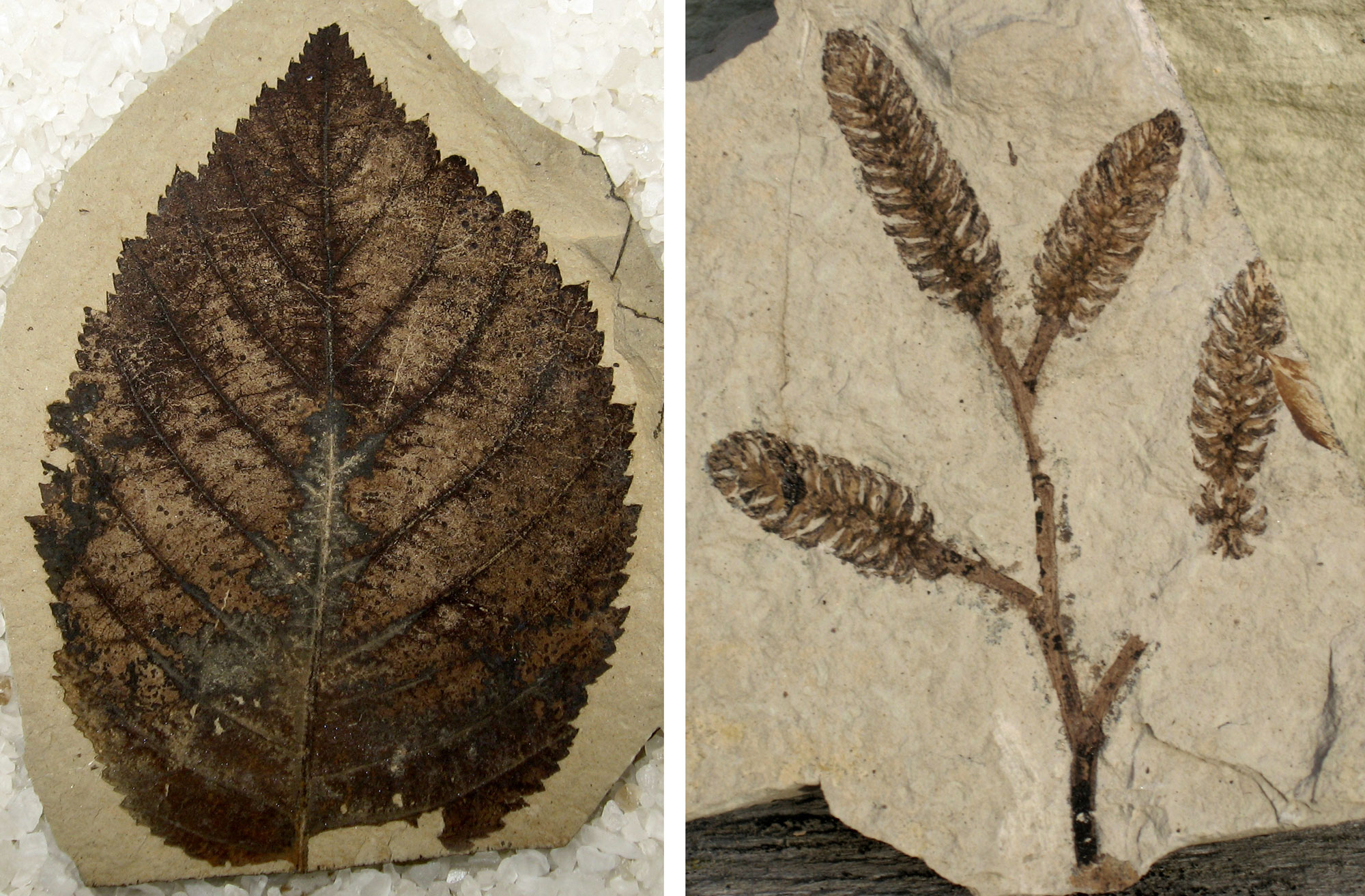
Members of the birch family (Betulaceae) from Republic, Ferry County, Washington. Left: Leaf of a birch (Betula leopoldae). Right: Fossil "cones" (really groups of flowers) from a member of the birch family. Left photo and right photo by Kevmin (Wikimedia Commons, Left: Creative Commons Attribution-ShareAlike 3.0 Unported license, image cropped and resized. Right: Creative Commons Attribution-ShareAlike 4.0 International license, image cropped and resized).
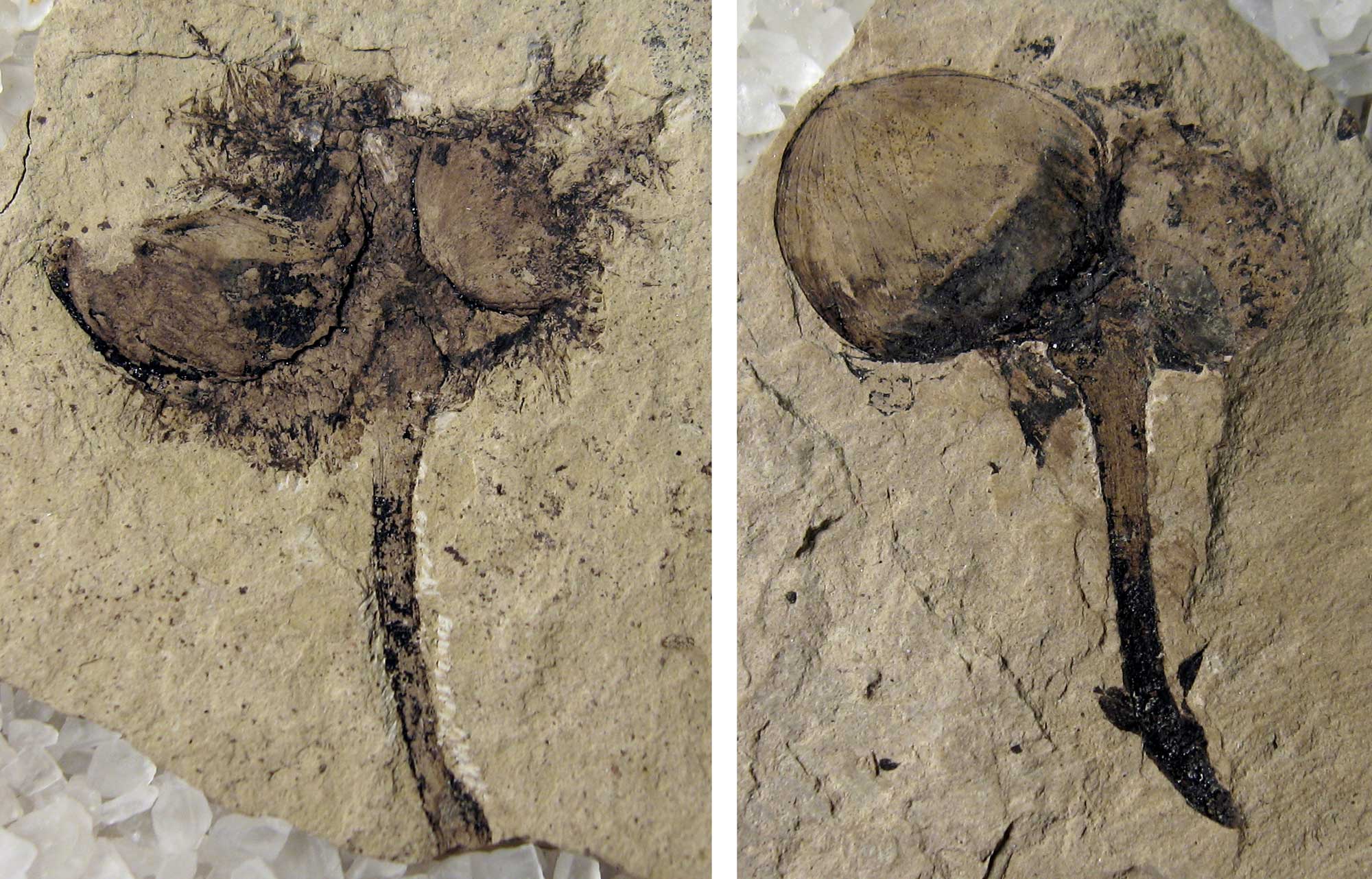
Fruits of hazelnuts (Corylus johnsonii) with spiny cupules from Republic, Ferry County, Washington. Left photo and right photo by Kevmin (Wikimedia Commons, Creative Commons Attribution-ShareAlike 3.0 Unported license, images cropped and resized).

Moth lacewings (order Neuroptera, net-winged insects) from Republic, Ferry County, Washington. Left: Allorapisma chuorum. Right: Palaeopsychops marrinagerae. Photos by Kevmin (Wikimedia Commons, Left: Creative Commons Attribution-ShareAlike 3.0 Unported license, image cropped and resized. Right: Creative Commons Attribution-ShareAlike 4.0 International license, image cropped and resized).
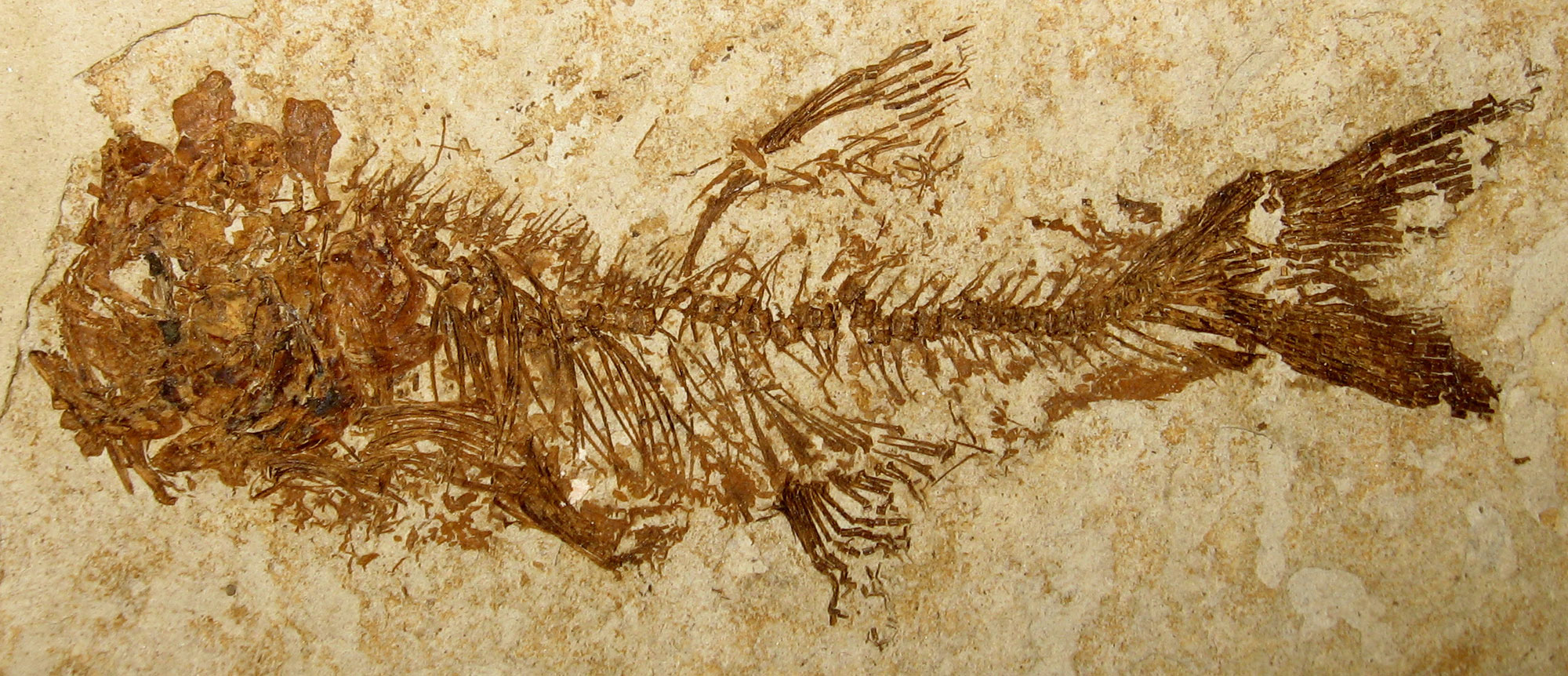
Mooneye (Hiodon, a type of fish) from Republic, Ferry County, Washington. Length = 6.5 centimeters long (about 2.6 inches). Photo by Kevmin (Wikimedia Commons, Creative Commons Attribution-ShareAlike 3.0 Unported license, image cropped and resized).
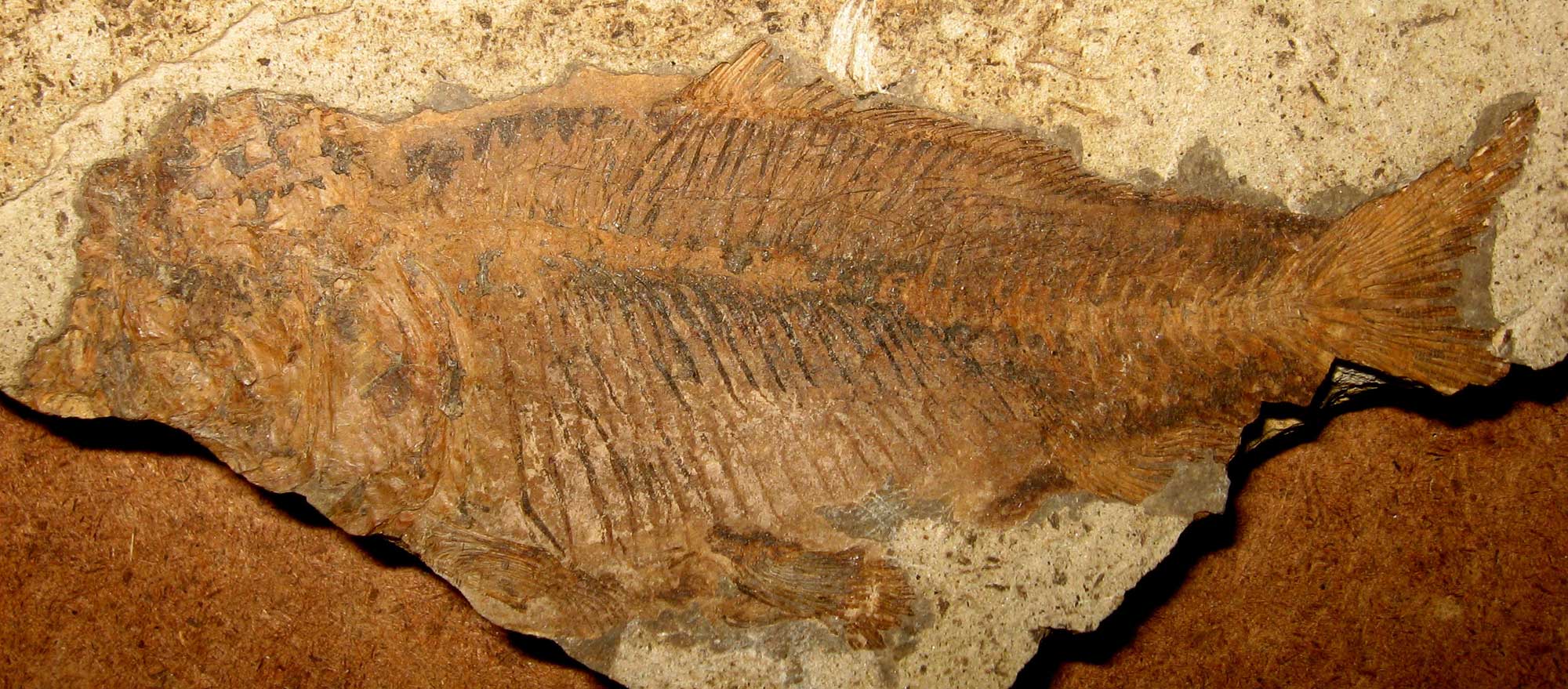
Sucker (Amyzon aggregatum) from Republic, Ferry County, Washington. Length = 10 centimeters (about 3.9 inches). Photo by Kevmin (Wikimedia Commons, Creative Commons Attribution-ShareAlike 3.0 Unported license, image cropped and resized).
Resources
Resources from the Paleontological Research Institution
Digital Atlas of Ancient Life Virtual Collection: https://www.digitalatlasofancientlife.org/vc/ (Virtual fossil collection featuring 3D models of fossil specimens sorted by group)
Digital Encyclopedia of Ancient Life: https://www.digitalatlasofancientlife.org/learn/
Earth@Home: Earth Science of the Northwest-central United States: Fossils of the Rocky Mountains (covers the Rocky Mountains of Idaho, Montana, and Wyoming): https://earthathome.org/hoe/nwc/fossils-rm/
Earth@Home: Earth Science of the Southwestern United States: Fossils of the Rocky Mountains (covers the Rocky Mountains of Colorado, New Mexico, and Utah): https://earthathome.org/hoe/sw/fossils-rm
Earth@Home: Quick guide to common fossils: https://earthathome.org/quick-faqs/quick-guide-common-fossils/



